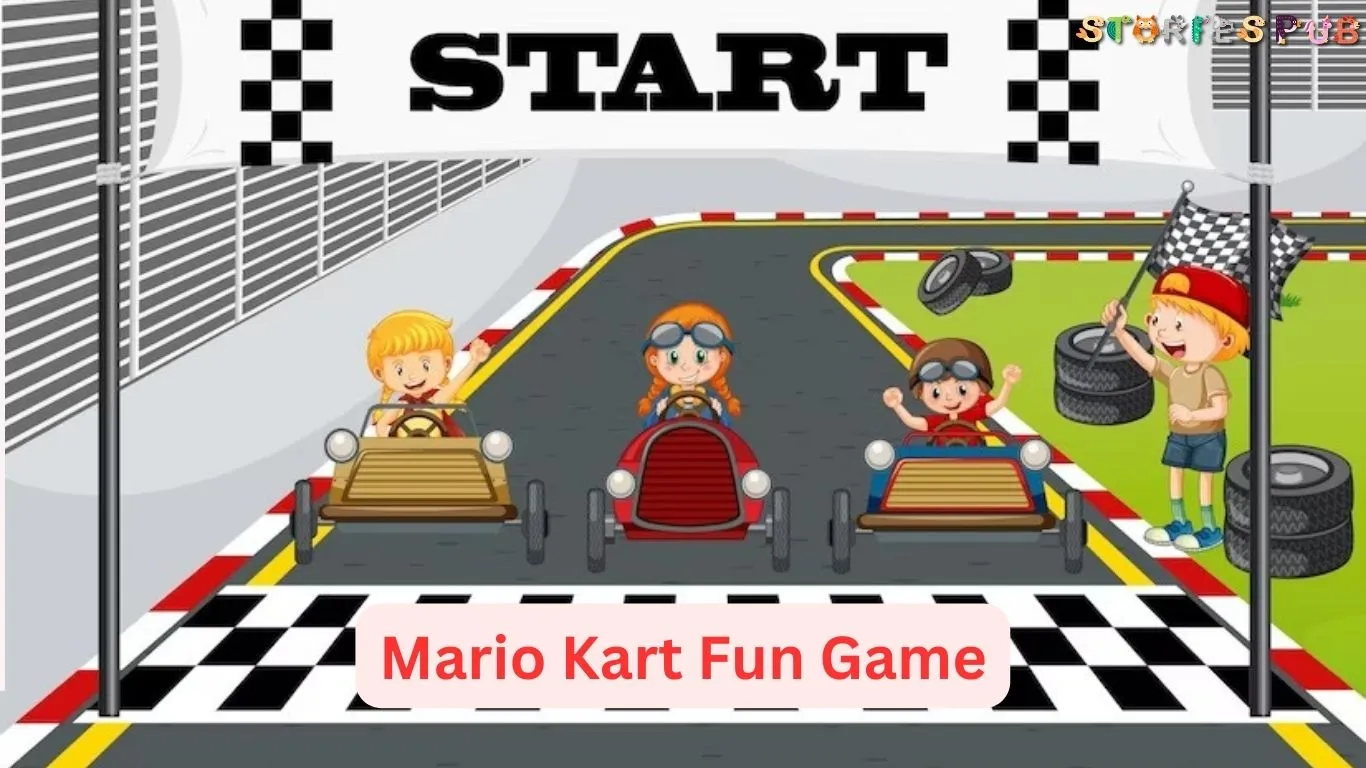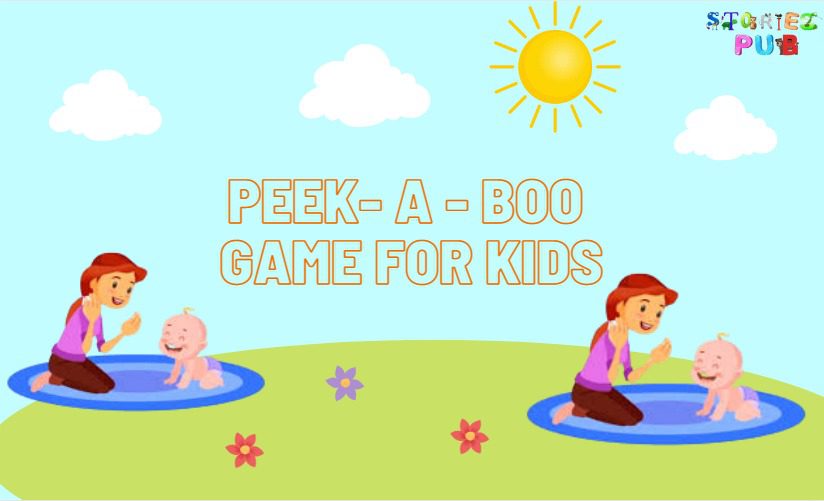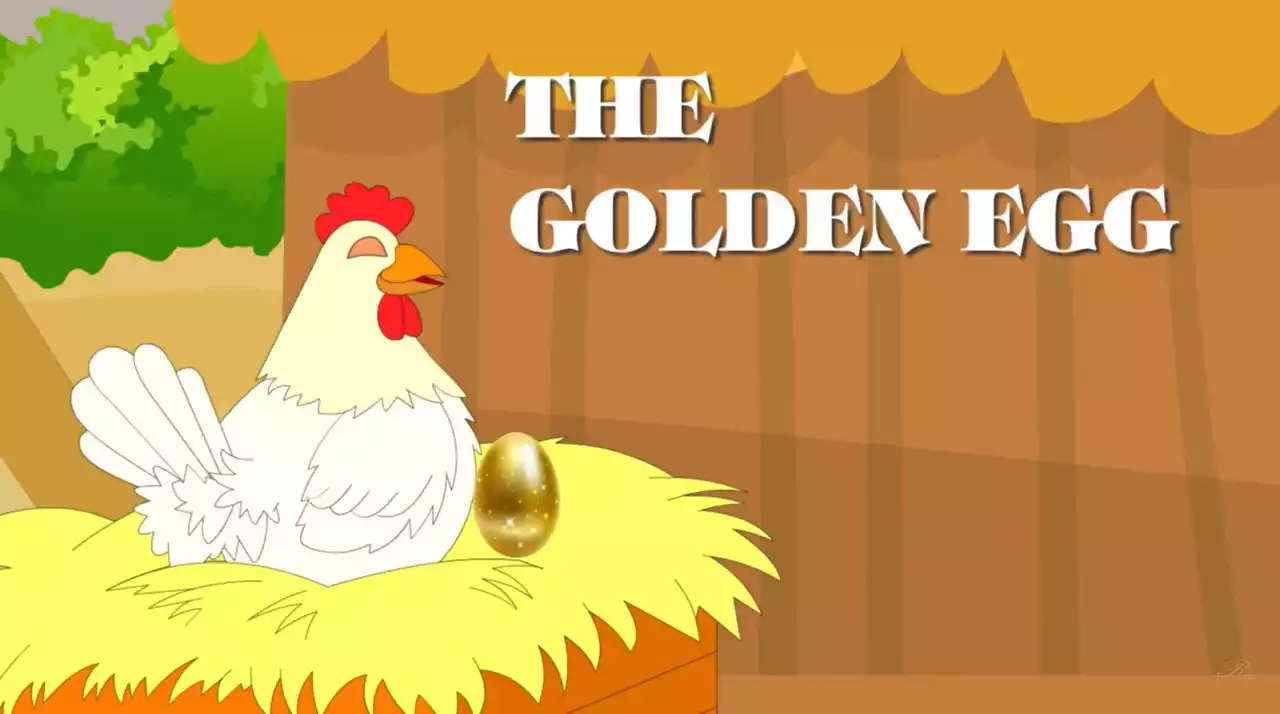Peek-a-boo game

Peek-a-boo is a classic game that has been played by parents and children for generations. It is a game that requires hiding and revealing one’s face, often accompanied by the use of the phrase “peek-a-boo!”
While it may seem like a simple game, there are several benefits to playing peek-a-boo with children, especially in terms of their development.
In this article, we’ll explore some of the surprising benefits of playing peek-a-boo with children.
Benefits of Playing Peek-a-Boo with Children
Promotes cognitive development:
Peek-a-boo requires the kids to use their memory and attention skills to remember that the person hiding behind their hands or a blanket is still there. Even when they can’t see them. This helps to develop their cognitive abilities and their understanding of object permanence.
Enhances social development:
Playing peek-a-boo with children helps to promote social interaction and bonding between the child and the person playing with them. This helps to develop their social skills and emotional intelligence.
Stimulates laughter and joy:
The element of surprise and anticipation involved in peek-a-boo can lead to laughter and joy, which can have positive effects on a child’s mood and overall well-being.
Encourages language development:
Playing peek-a-boo with children can provide opportunities for language development, as the child may begin to associate the phrase “peek-a-boo” with the act of hiding and revealing. This can help to expand their vocabulary and understanding of language.
Provides sensory stimulation:
The act of hiding and revealing one’s face can provide sensory stimulation for children, especially those who are very young. It can help to develop their sense of touch, as well as their visual and auditory perception.
Why is it called peek-a-boo?
The name “peek-a-boo” is derived from the phrase “peek” which means to take a quick look or glance, and “boo” which is an exclamation used to startle someone.
The game is called peek-a-boo because it involves a person hiding their face and then revealing it while saying “peek-a-boo!” to surprise and delight the child.
How does peek-a-boo work?
Peek-a-boo works because it engages a child’s attention and promotes their cognitive and social development. By hiding and revealing one’s face, the child must use their memory and attention skills to remember that the person is still there even when they can’t see them.
This helps to develop their cognitive abilities and their understanding of object permanence. Additionally, the social interaction and bonding that occurs during the game can help to develop the child’s social skills and emotional intelligence.
What is a pick-a-boo?
It is a classic game often played with babies or young children, where one person hides their face and then reveals it while saying “peek-a-boo!” to surprise and delight the child.
The peek-a-boo game is a simple game that involves hiding and revealing one’s face. It is often played with babies or young children and can have several benefits for their development including promoting cognitive and social development, enhancing language development, and providing sensory stimulation.
Variants of playing peek-a-boo game
Peek-a-boo is a classic game that involves hiding and revealing one’s face or body, usually with a cloth or one’s hands. Here are a few variants of the game and how to play them:
Hide and Seek Peek-a-Boo:
- This game is a combination of peek-a-boo and hide-and-seek.
- One person hides while the other counts to ten or a predetermined number.
- Then, they search for the hidden person while saying “peek-a-boo” every few seconds.
- The hidden person responds with “peek-a-boo” when found, and the game continues until everyone has had a turn.
Object Peek-a-Boo:
- Instead of hiding one’s face, this game involves hiding an object, such as a toy or stuffed animal.
- One person hides the object while the other covers their eyes.
- Once the object is hidden, the player uncovers their eyes and says “peek-a-boo” until they find the hidden object.
Mirror Peek-a-Boo:
- This game is played in front of a mirror.
- One person stands behind the other and covers their eyes.
- The person in front says “peek-a-boo” while moving in and out of the mirror’s view until the person behind them can see their reflection.
Peek-a-Boo with a Baby:
- This is a classic game for parents to play with their infants.
- Cover your face with your hands or a cloth and say “peek-a-boo” while uncovering your face quickly.
- Babies will typically find this game amusing and will often laugh or smile when they see your face.
How to play hide and seek peek-a-boo game
Hide and Seek peek-a-boo is a fun variation of the classic game of peek-a-boo that can be played with babies and young children. Here are the steps to play:
Choose a quiet and safe area to play the game.
- Start by playing a few rounds of traditional peek-a-boo to get the baby or child familiar with the game.
- Explain that you will be playing hide-and-seek peek-a-boo, where you will hide and they will have to find you.
- Choose a hiding spot that is safe and easy to find, such as behind a couch or a nearby door.
- Once you are hidden, say “Where am I?” or “Can you find me?” in a playful tone.
- Wait for the baby or child to come and find you.
- When they find you, say “peek-a-boo!” and make a silly face.
- Repeat the game, taking turns hiding and seeking.
Remember to make the game fun and engaging, and to always keep the baby or child’s safety in mind. As with any game involving young children, supervision and attention are key to ensuring a safe and enjoyable experience for everyone involved.
How to play object peek-a-boo game
Object peek-a-boo is a fun game that can help babies and young children develop their object permanence skills. Here are the steps to play:
- Choose an object that the baby or child is familiar with, such as a toy or a book.
- Show the object to the baby or child and let them examine it.
- Once they are interested in the object, cover it with a cloth or blanket.
- Say “Where is the (object’s name)?” or “Can you find the (object’s name)?” in a playful tone.
- Wait for the baby or child to uncover the object.
- When they uncover the object, say “peek-a-boo!” and make a silly face.
- Repeat the game a few times, gradually increasing the time the object is covered.
- You can also make the game more challenging by hiding the object in different places or using multiple objects at once.
Remember to make the game fun and engaging, and to always supervise young children during play. This game is a great way to help babies and young children develop their object permanence skills and can also be a fun bonding experience for parents and children.
How to play mirror peek-a-boo game
Mirror peek-a-boo is a fun game that involves using a mirror to play peek-a-boo with a baby or young child. Here are the steps to play:
- Sit in front of a mirror with the baby or child on your lap.
- Make eye contact with the baby or child and say “peek-a-boo!” in a playful tone.
- Cover your face with your hands or a blanket, making sure that the baby or child can still see your reflection in the mirror.
- Count to three and then remove your hands or blanket, revealing your reflection in the mirror.
- Say “peek-a-boo!” again, this time pointing to your reflection in the mirror.
- Watch the baby or child’s reaction and wait for their response.
- Repeat the game a few times, gradually increasing the time you cover your face.
- You can also make silly faces or sounds to make the game more engaging for the baby or child.
Remember to be gentle and playful with the baby or child, and to follow their lead. This game can be a fun way to help them develop their visual and cognitive skills and be a great bonding experience.
Rules to follow while playing peek a boo
While playing peek-a-boo is generally a fun and simple game, there are a few basic rules and guidelines to follow to ensure that everyone involved enjoys the experience:
Be gentle: When playing peek-a-boo with a baby or young child, it’s important to be gentle and considerate of their physical and emotional needs. Avoid making sudden movements or loud noises that could startle or upset them.
Make eye contact: One of the key aspects of peek-a-boo is the surprise and anticipation that comes from hiding and revealing your face. Make sure to establish eye contact with the child before covering your face, and maintain that connection throughout the game.
Keep it simple: Peek-a-boo is a game that is best played simply and straightforwardly. Don’t overcomplicate things by introducing too many variations or twists, as this can confuse or frustrate young children.
Use appropriate language: While playing peek-a-boo, use simple and age-appropriate language to communicate with the child. This can help them develop language skills and build their vocabulary.
Follow the child’s lead: When playing peek-a-boo with a young child, it’s important to let them take the lead and set the pace of the game. Follow their cues and respond to their reactions, rather than trying to control or direct the game yourself.
By following these basic rules and guidelines, you can help ensure that playing peek-a-boo is a fun experience for everyone involved.
When do babies play peek-a-boo on their own
Babies typically start playing peek-a-boo on their own around 6-8 months of age, although this can vary depending on their individual development. At this stage, babies have developed enough cognitive and motor skills to initiate the game themselves.
One way that babies might start playing peek-a-boo on their own is by covering their face with their hands or a blanket and then uncovering it to reveal their faces. They may also begin to understand the concept of object permanence, which is the idea that objects and people continue to exist even when they are out of sight.
This understanding allows them to anticipate the reappearance of a person or object after it has been hidden. As babies grow and develop, they may also start to incorporate variations on the basic peek-a-boo game, such as playing hide-and-seek with toys or other objects.
These games can help babies develop important cognitive and social skills, such as problem-solving, creativity, and social interaction. It’s worth noting that every baby develops at their own pace, so some babies may start playing peek-a-boo on their own earlier or later than others.
It’s important to provide babies with plenty of opportunities to play and explore and to support their development in a way that is appropriate for their individual needs and abilities.
What type of development is peek-a-boo most important for
Peek-a-boo can be important for several areas of a child’s development, including social, emotional, cognitive, and language development. Socially, playing peek-a-boo helps infants develop a sense of trust and security with their caregivers.
By repeatedly hiding and revealing their face, caregivers can help infants develop an understanding of object permanence and begin to anticipate the reappearance of their caregiver.
This can help build a sense of connection and attachment between the infant and caregiver, which can form the basis for healthy social relationships later in life.
Emotionally, playing peek-a-boo can help infants learn to regulate their emotions and develop a sense of humor. The surprise and anticipation of the game can elicit laughter and joy from infants, which can help them learn to manage their emotions positively.
Cognitively, playing peek-a-boo can help infants develop their understanding of cause and effect, as well as their ability to engage in problem-solving and creative thinking.
The game requires infants to use their memory and attention skills to anticipate the reappearance of their caregiver, which can help strengthen their cognitive abilities.
Linguistically, playing peek-a-boo can help infants develop their language skills by exposing them to simple and repetitive language patterns. Caregivers can use language cues, such as “peek-a-boo” or “Where did mommy go?”, to reinforce the game and help infants learn new words and concepts.
Stages of peek a boo
In the early months of life, caregivers may introduce the concept of peek-a-boo to their infant by covering and uncovering their face with their hands, a blanket, or another object. This helps infants develop an understanding of object permanence and begin to anticipate the reappearance of their caregiver.
Participation: As infants grow and develop, they may begin to actively participate in the game by covering and uncovering their faces or other objects. This helps them develop their motor skills and creativity.
Variations: As infants become more familiar with the game, caregivers may introduce variations, such as hiding behind a door or using toys or other objects to play hide-and-seek. This helps infants develop their problem-solving and creativity skills.
Vocalization: As infants begin to develop their language skills, they may start to vocalize during the game, such as saying “peek-a-boo” or giggling in anticipation of the reappearance of their caregiver.
Independence: As infants become more confident and independent, they may start to initiate the game themselves by covering and uncovering their faces or other objects. This helps them develop their autonomy and self-confidence.
Extended play: As infants continue to grow and develop, they may start to incorporate other games and activities into peek-a-boo, such as singing, dancing, or playing with toys. This helps them develop their social and emotional skills and strengthens their relationships with caregivers and peers.
Why do kids like peek-a-boo?
Kids like peek-a-boo because it’s a simple and fun game that engages their senses and teaches them about object permanence. When a caregiver or parent hides their face, the child experiences a moment of uncertainty or surprise and then feels a sense of joy and relief when the face is revealed.
This cycle of anticipation, surprise, and reward is what makes peek-a-boo so appealing to young children. It also helps develop their cognitive abilities, including their understanding of cause and effect, and their ability to predict outcomes based on previous experiences.
How should a baby respond to peek-a-boo?
Babies typically respond to peek-a-boo with laughter, smiles, and excitement. They may also mimic the actions of the caregiver or parent, by covering their face with their hands or a blanket.
Caregivers need to respond positively to the baby’s reactions, by using a happy and engaging tone of voice, and by continuing the game gently and reassuringly.
Peek-a-Boo Boxing
Peek-a-boo boxing is a unique style of boxing that was developed by legendary trainer Cus D’Amato. This style emphasizes defense and close-range fighting, with the hands positioned in front of the face and the head tucked behind the shoulders.
In this style of boxing, the fighter uses a quick bobbing and weaving motion to avoid punches, while staying close to their opponent to land short, powerful punches on the inside.
The fighter will often use a quick, explosive step to close the distance between themselves and their opponent while keeping their guard up and chin tucked behind their shoulder.
The name “peek-a-boo” comes from the way the fighter looks through their guard at their opponent, similar to the game of peek-a-boo. The fighter will often “peek” through their guard to time their opponent’s punches and find openings for their punches.
Baby peek-a-boo with a blanket
Peek-a-boo with a blanket is a fun and easy game to play with babies. All you need is a soft, lightweight blanket and a willing little one! Simply cover your face with the blanket, and then pull it away to reveal your smiling face and say “Peek-a-boo!” Watch as your baby giggles and squeals with delight, and enjoy the special bond that this simple game can create.
Conclusion
Peek-a-boo is a simple yet powerful game that can have a significant impact on a child’s development. Through playing peek-a-boo, infants and young children can develop their social, emotional, cognitive, and language skills in a fun and engaging way.
The game helps children build a sense of trust and attachment with their caregivers, learn to regulate their emotions, develop problem-solving and creative thinking skills, and strengthen their language and communication abilities.
As children grow and develop, they can participate in the game in increasingly complex and independent ways, building their confidence and sense of autonomy.
Hey kids, how much did you like the Peek-a-boo game? Please share your view in the comment box. Also, please share this story with your friends on social media so they can also enjoy it, and for more such stories, please bookmark storiespub.com.





















